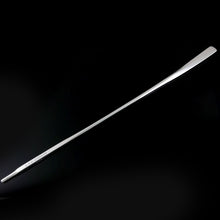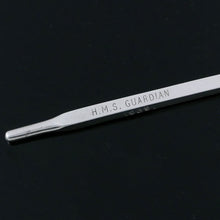H.M.S. Guardian Prize Oar, 1939
- Regular price
- £660
- Sale price
- £660
- Regular price
-
- Unit price
- /per
Adding product to your cart
Length: 12in (30cm)
Silver. Miniature 1939 Home Fleet Regatta presentation oar. The shaft inscribed ‘WINNERS / H.M.S. GUARDIAN / 1939.’ Maker’s mark of NA&AFI for the Navy, Army & Air Force Institutes (est. 1920). Hallmarked 1938.
Pulling races at Fleet Regattas in the 1920s and 30s were eagerly anticipated events and were held periodically in the Royal Navy’s principal fleets. For weeks beforehand, every opportunity was taken to train the crews entered by each ship. A ship’s gig might be crewed by officers, midshipmen or ratings under the urging of a coxswain, who was often a petty officer. Though a heavy boat by comparison, a gig with a good crew could be made to move though the water at surprising speed.
Read more
Guardian was ordered as part of the 1930 naval programme, and was the first purpose built netlayer (boom defence vessel) for the Royal Navy. She was laid down at Chatham Dockyard and launched in 1932. Guardian served in the Indian Ocean between 1941 and 1942. She took part in the invasion of Madagascar and helped build a base in the Maldives at Addu Atoll in 1942 in case Ceylon fell into Japanese hands. She also built two more bases for the protection of merchant ships assembling for convoys: one near Mombasa and the other near Cape Town. Guardian returned to Gibraltar and took part in the invasion of Algeria at Oran (Operation Torch) in 1942. Afterwards, she returned to Belfast for a refit and the fitting of additional anti-aircraft weaponry. Later, she took part in the invasions of Sicily (Operation Husky) and Italy.






